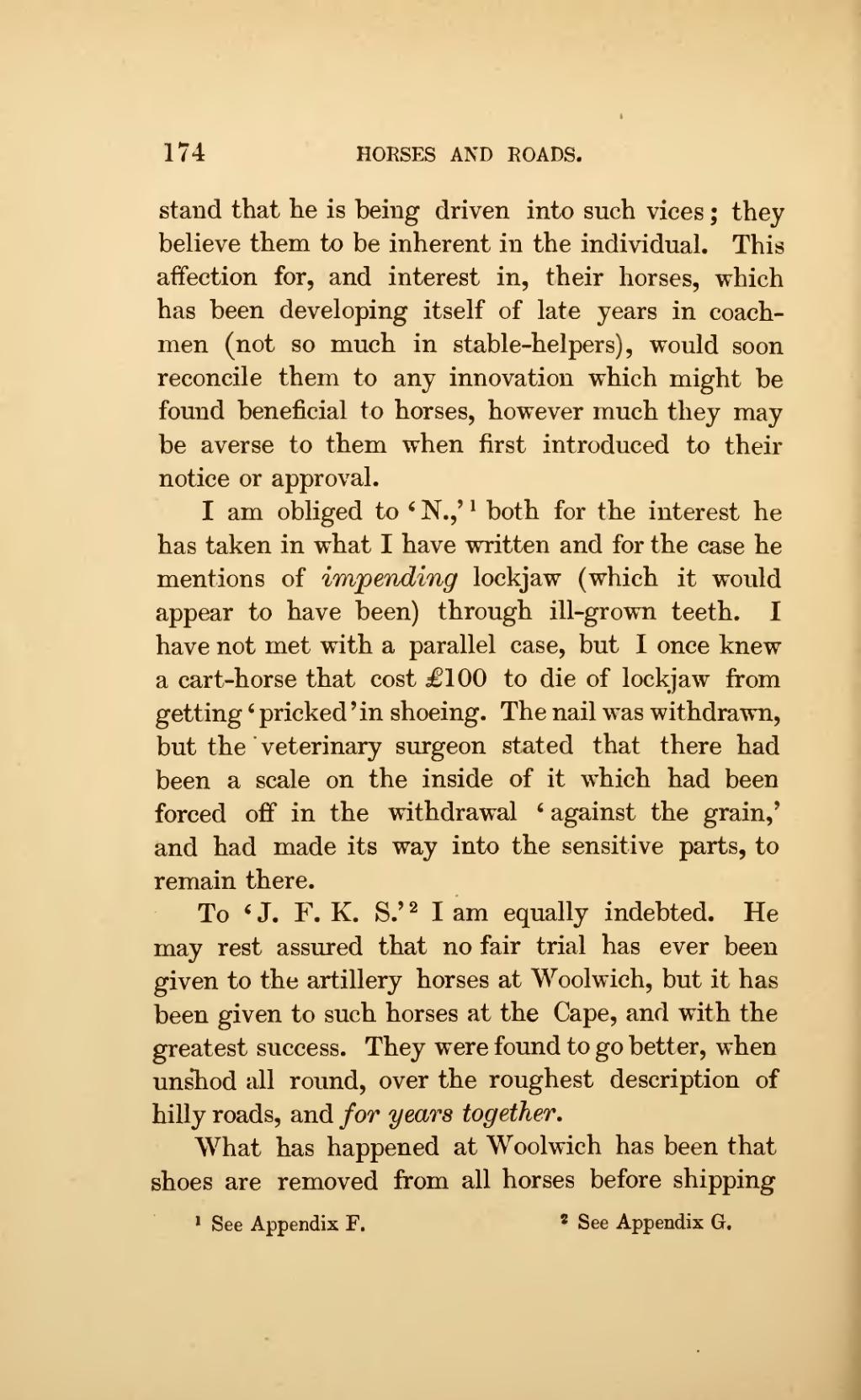stand that he is being driven into such vices; they believe them to be inherent in the individual. This affection for, and interest in, their horses, which has been developing itself of late years in coachmen (not so much in stable-helpers), would soon reconcile them to any innovation which might be found beneficial to horses, however much they may be averse to them when first introduced to their notice or approval.
I am obliged to ‘N.,’[1] both for the interest he has taken in what I have written and for the case he mentions of impending lockjaw (which it would appear to have been) through ill-grown teeth. I have not met with a parallel case, but I once knew a cart-horse that cost £100 to die of lockjaw from getting ‘pricked’ in shoeing. The nail was withdrawn, but the veterinary surgeon stated that there had been a scale on the inside of it which had been forced off in the withdrawal ‘against the grain,’ and had made its way into the sensitive parts, to remain there.
To ‘J. F. K. S.’[2] I am equally indebted. He may rest assured that no fair trial has ever been given to the artillery horses at Woolwich, but it has been given to such horses at the Cape, and with the greatest success. They were found to go better, when unshod all round, over the roughest description of hilly roads, and for years together.
What has happened at Woolwich has been that shoes are removed from all horses before shipping
